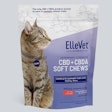
In three different regions, certain aromas aroused pet owners’ positive emotions in a study on dog and cats owners’ responses to dry pet food odor. However, among the pet owners of Brittany in France, Kansas in the Unites States and Réunion Island, off the east coast of Africa, scientists found differences in people’s psychological reactions to kibble odor.
Pet owners used different emotional terms to describe dog and cat food odors depending on where they lived. These differences may have resulted from local cultural attitudes towards food. Pet food formulators may appeal to these regional preferences using product odor, along with differentiating and reinforcing their brand.
Dog and cat owner emotional responses to kibble odor
In total, 289 dog owners and 294 cat owners evaluated kibble odors. The researchers worked for Diana Pet Food and Kansas State University.
Among study participants, French and American pet owners expressed different emotional approaches toward kibble odor. Americans tended to differentiate products using negative emotions such as guilty, disgusted and aggressive. On the other hand, French owners used emotional terms related to pleasure and activation, like enthusiastic, active, adventurous and joyful. French owners used the word enthusiastic significantly more often than American owners.
“This could result from different approaches of American and French towards the odor of food products in general,” the researchers wrote in the journal Food Quality and Preference.
Some odors inspired similar responses across cultures though.
“In the present study, the notes ‘spicy’, ‘aromatic herbs like’, ‘yeast - bouillon like’ and ‘roasted chicken like’ were related to activation,” they wrote. “These odors inspired from human food odors are not commonly found in dry pet food. The novelty character of these odors could trigger emotions related to activation among pet owners, who are not used to these types of odors in dry pet food…
In all three regions, pet owners were emotionally turned off by odors described as fatty - rancid, viscera-like and cereal-like.
“These notes even triggered ‘bored’ feelings for French dog owners and American owners. This was not surprising, as owners are familiar with these notes in their pet’s food. Furthermore, the notes ‘fatty - rancid’ and ’cereal like’ could point towards an indulgent food with high caloric content that provides feelings of comfort.”
Coffee-like odors also aroused displeasure in dog and cat owners.
“These results could be explained by the discrepancy between the characteristic odor note ‘coffee like’ and the usual odor of dry pet food.”
















